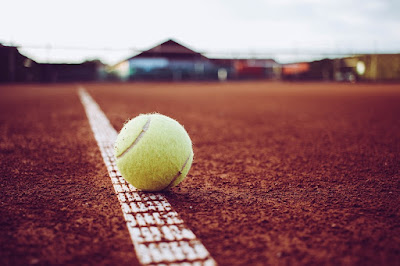The type of training surface athletes use can significantly influence their performance and risk of injury. From the soft, forgiving surfaces of grass fields to the harder, unforgiving ones of synthetic tracks, every choice matters. In this article, we will explore the impact that different types of training surfaces have on athletes, focusing on both their performance and injury risk.
Natural Grass Fields
Natural grass is often preferred for many outdoor sports, such as soccer and American football, due to its soft and cushioned surface. Grass provides a degree of shock absorption, reducing the impact on an athlete's joints and muscles during high-impact activities like running, cutting, and jumping. This can help lower the risk of injuries, especially lower limb injuries like sprains and strains
Grass surfaces also mimic the conditions athletes typically encounter during competitions, allowing them to develop their skills and adapt more effectively to game situations. However, the quality and maintenance of natural grass can vary significantly, affecting its consistency and safety.
Synthetic Turf
Synthetic turf has gained popularity in recent years due to its durability and all-weather usability. While it offers consistent playing conditions, it is a harder and less forgiving surface compared to natural grass. The increased hardness can lead to a higher risk of overuse injuries, such as stress fractures and joint problems, as it doesn't absorb shock as effectively as grass.
However, synthetic turf's consistent and predictable surface can be beneficial for athletes to work on technical skills. It's especially useful for sports like field hockey, where ball movement and precision are crucial.
Running Tracks
Running tracks, typically made of rubberized materials, are used by athletes for sprinting, long-distance running, and various track and field events. The surface provides excellent traction and shock absorption, reducing the risk of injuries related to running.
The consistency of running tracks allows athletes to measure their progress accurately, making them ideal for performance training. However, the repetitive nature of running on tracks can contribute to overuse injuries, emphasizing the importance of varying training surfaces.
Sand and Gravel
Sand and gravel surfaces are commonly used for training in sports like beach volleyball, long jump, and triple jump. These surfaces are much softer than synthetic turf or tracks, which can reduce the impact on joints and muscles during training. Athletes who train on sand or gravel often emphasize balance, agility, and strength due to the unstable nature of these surfaces.
However, sand and gravel can pose their own set of challenges. The uneven surface can increase the risk of ankle sprains and other minor injuries. Athletes must adapt their training techniques to suit these conditions.
Indoor Courts
Indoor courts, used in sports like basketball, volleyball, and tennis, provide controlled and consistent playing conditions. These surfaces are typically made of hardwood or synthetic materials that offer excellent traction for quick movements.
Indoor courts are ideal for honing sport-specific skills and tactics, but the hardness of the surface can increase the risk of stress-related injuries, particularly in sports requiring frequent jumping and lateral movements.
Conclusion
The choice of training surface plays a vital role in an athlete's performance and injury risk. Natural grass provides cushioning and mimics competition conditions but can vary in quality. Synthetic turf offers durability but is less forgiving on the body. Running tracks provide an excellent surface for sprinting but can lead to overuse injuries.
Sand and gravel surfaces challenge athletes' balance and agility while reducing the impact on joints. Indoor courts provide controlled conditions but can contribute to stress-related injuries. Coaches and athletes must carefully consider the surface they train on and incorporate variety to balance performance gains with injury prevention. Ultimately, the right training surface choice can make a significant difference in an athlete's journey to excellence.
Photo: Pixabay (free)

No comments:
Post a Comment
Thanks for your comment.